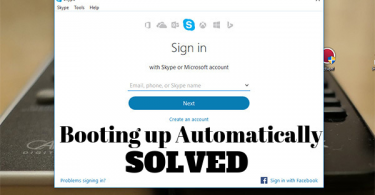Curious how selecting fonts can impact your website design experience? Read on to find out more!
Websites serve as virtual storefronts and communication platforms. While elements like layout, color schemes, and images are vital, one often underestimated aspect that can significantly impact user experience is the choosing fonts for website. The right fonts evoke emotions, convey brand personality, and enhance readability. As a business owner, you understand the importance of creating a compelling website that resonates with your target audience.
The Significance of Font Selection in Web Design and User Experience
Fonts are not mere decorations but powerful tools that shape user perception and interaction with a website. They contribute to the overall aesthetics, create a visual hierarchy, and convey important information effectively.
Visitors to your website subconsciously form opinions about your brand based on various design elements, including fonts. A well-chosen font can establish credibility, professionalism, and trust, while a poor font can create confusion or even drive potential customers away.

https://unsplash.com/photos/iEiUITs149M
Understanding the Role of Fonts in Web Design
Fonts have a profound psychological impact on users. Different font categories evoke specific emotions and associations. For instance, serif fonts, with their traditional and formal appearance, are often associated with elegance, respectability, and reliability.
On the other hand, sans-serif fonts are perceived as modern, clean, and straightforward. Script fonts exude a sense of creativity and personal touch, while display fonts are attention-grabbing and bold.
To effectively communicate your brand message, it’s crucial to align the font style with your website’s purpose and target audience. For example, suppose you’re running a financial consultancy firm in the United States. In that case, a serif font might be a better choice, as it conveys professionalism and trust, essential traits in the financial industry. However, if you have a tech startup targeting a younger audience, a clean and modern sans-serif font might be more suitable to reflect innovation and forward-thinking.
Key Considerations for Selecting Fonts
When selecting fonts for your website, there are several factors to consider. Firstly, you must ensure that the chosen fonts align with your brand identity and reflect the values you want to convey. Consistency is critical, so it’s essential to maintain the same font across different sections of your website to create a cohesive and visually pleasing experience.
Furthermore, it’s crucial to consider the preferences and expectations of your target audience. Conducting user research and gathering feedback can provide valuable insights into the font styles that resonate with your visitors. Remember, those fonts can evoke emotions and associations, so understanding your audience’s preferences will help you make informed decisions.
When it comes to selecting fonts for your website, there are a few additional vital considerations that can help you make informed decisions:
- Readability: Regardless of how aesthetically pleasing a font may be, users will quickly lose interest if it’s difficult to read. Consider the font’s legibility, particularly at different sizes and on various devices. Fonts with good readability characteristics, such as appropriate spacing between characters and clear letterforms, are essential for a positive user experience.
- Licensing and compatibility: Some fonts may have specific licensing restrictions that require you to purchase a license for commercial use. Ensure you understand and comply with the font’s licensing terms to avoid legal issues. Additionally, consider the technical compatibility of the fonts with different web browsers and operating systems. Test your chosen fonts across multiple platforms to ensure consistent display and functionality.
- Loading speed: Large font files or numerous font variations can slow the loading time, negatively impacting user experience. Optimize your font usage by selecting fonts with reasonably sized files and consider using font subsets, which include only the characters you need for your website. This optimization can improve loading times and enhance your site’s overall performance.

https://unsplash.com/photos/pKRNxEguRgM
Best Practices for Font Selection in Web Design
To create a visually appealing and impactful website, it’s essential to follow some best practices when selecting fonts. Firstly, consider establishing a typography hierarchy. This involves using different font sizes, weights, and styles to create a clear visual structure. Heading fonts should be more prominent and bolder, while body text fonts should be legible and easily read.
Combining fonts harmoniously is another crucial aspect of web design. Selecting fonts from different categories can create a visually exciting contrast while maintaining consistency. A general rule of thumb is pairing a decorative or attention-grabbing font with a simple, easy-to-read one. This combination ensures that critical information stands out while maintaining readability.
Accessibility considerations are also paramount in web design. It’s essential to choose fonts that are legible across different devices and screen sizes. Fonts with good readability and appropriate spacing between characters and lines enhance the user experience for all visitors, including those with visual impairments.
According to a recent study conducted in the United States, websites with optimized font choices experienced a significant increase in user engagement and conversion rates. A carefully selected font tailored to your business and target audience can improve users’ time on your website and encourage them to take desired actions, such as making a purchase or subscribing to a newsletter. By investing time and effort in selecting fonts that align with your brand and user preferences, you can substantially boost online success.
Conclusion
Regarding web design, fonts are a powerful tool that can make or break the user experience. By understanding the psychology behind fonts, considering key factors such as brand identity and target audience, and implementing best practices, you can create a visually impactful website that resonates with your visitors.
Font selection is an art that requires thoughtful consideration, and by dedicating attention to this crucial aspect of web design, you can elevate your online presence and captivate your audience effectively. Remember, fonts are not just letters on a screen; they are an opportunity to create a lasting impression.


























